In the News
Posted on November 21, 2023
This article was originally published by AsphaltPro Magazine.
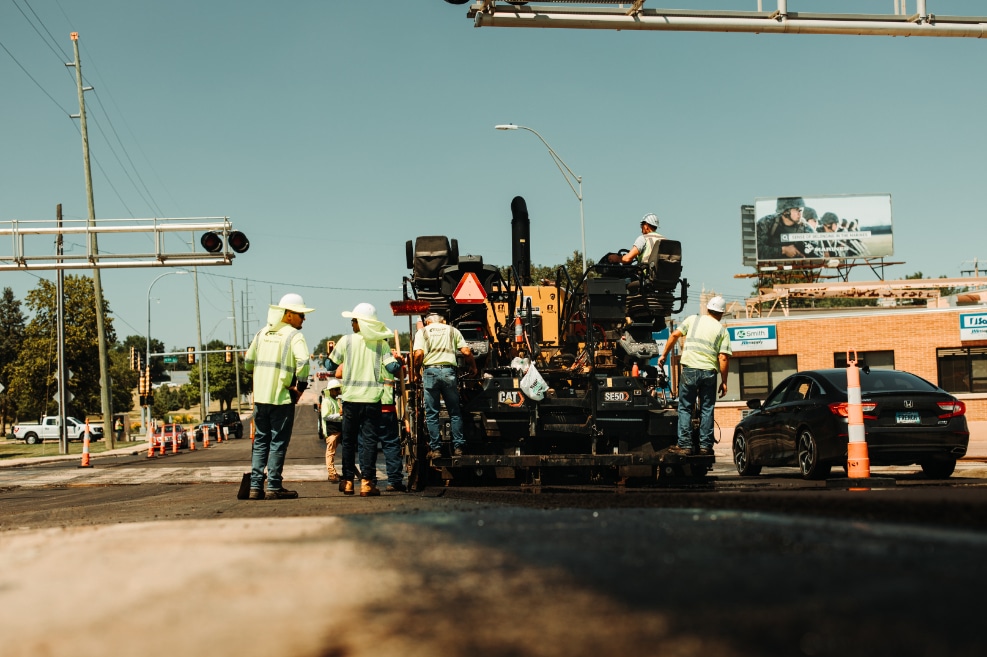
Cliff Avenue is a minor arterial street in the city of Sioux Falls, South Dakota, that sees between 16,000 and 18,000 vehicles per day. “It’s a pretty busy thoroughfare,” said Mike Schmidt, street engineer for the city of Sioux Falls. “It also borders our downtown area, so it’s a good daily commuter route for people going to and from work downtown.”
Originally paved with concrete in 1992, the existing pavement on Cliff Avenue had reached the end of its service life. Historically, Sioux Falls’ arterial streets have been paved with concrete, along with its major intersections. “Pretty much every other road in the city is asphalt,” Schmidt said. However, when the city decided in the summer of 2022 that it was time for 15 blocks of the avenue (from 11th Street to 26th Street) to receive an upgrade, it opted for asphalt.
Originally paved with concrete in 1992, the existing pavement on Cliff Avenue had reached the end of its service life. The asphalt overlay approach on Cliff Avenue cost $2.2 million, compared to an estimated $15 million for concrete (with new utilities).
“Cliff Avenue had already been through quite a few joint repairs, but the road was still in rough shape,” Schmidt said. The city decided to overlay the concrete with asphalt. “That’s not something we’ve done a lot of here, but it’s emerging as a new repair strategy for us.”
According to Schmidt, the city’s approach to its concrete arterials has long been to perform joint repairs 10 and 20 years into the life of the street, followed by a full reconstruction and replacement with new concrete. “That’s getting unbelievably expensive—up to $1 million per block including utilities,” he said. However, the utilities on Cliff Avenue were in good condition. “It was only the concrete that was getting old and becoming too rough a ride.”
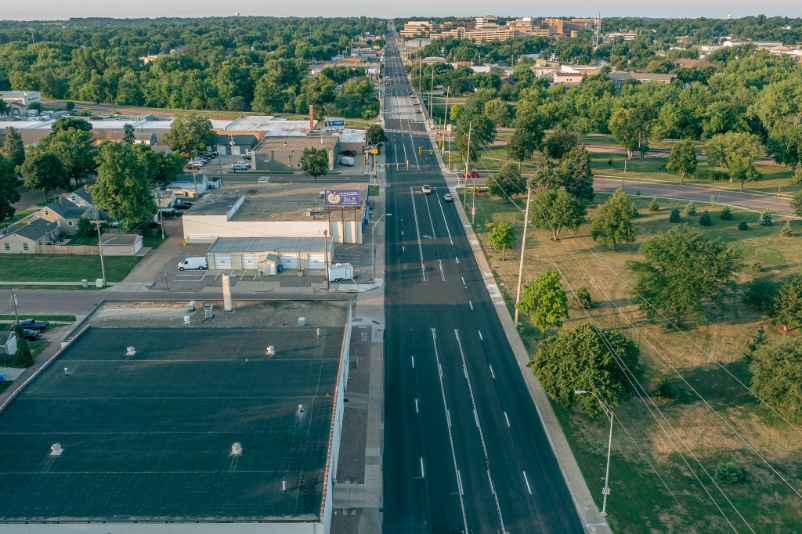
Originally paved with concrete in 1992, the existing pavement on Cliff Avenue had reached the end of its service life. The asphalt overlay approach on Cliff Avenue cost $2.2 million, compared to an estimated $15 million for concrete (with new utilities).
The asphalt overlay approach on Cliff Avenue would cost $2.2 million, while Schmidt estimates a full concrete reconstruction would likely cost around $15 million with new utilities. “For one eighth the cost, we can get another 8 to 10 years out of this with an overlay versus 30 years out of a full reconstruction,” he said. “We could do four overlays and it’s still nearly half the price of the reconstruction. The asphalt overlay is a much more affordable route, as long as the utilities are still good.”
The city’s decision to overlay with asphalt was further buoyed by the success of a 2019 asphalt overlay atop concrete on 41st Street. “That’s one of our highest traffic volume streets in the city,” Schmidt said. “It’s still in really good shape four years later, which gave us the confidence to try something similar on Cliff Avenue.”
To complete the job, the city looked to Journey Group, Sioux Falls.
Journey Group Gets Started
According to Ryan Kerkvliet, vice president of Journey Group’s asphalt division, Black-Top Paving, the company has performed many projects with the city of Sioux Falls. “What caught our eye about this job was the larger amount of tonnage the job required, and that it fit perfectly in our wheelhouse,” Kerkvliet said.
The bid was let June 9, 2022, with an Oct. 14, 2022, completion date. After Journey Group won the bid, it was already early August by the time the concrete subcontractor was able to get to work on Cliff Avenue. “There were a lot of deteriorating concrete joints that we needed to pre-fill before we could place our leveling course because they were in such bad shape,” said Cody Latusek, Journey’s project manager for the Cliff Avenue job.
Across the four- and five-lane arterial, the crew had to repair 88 joints and perform some curb and gutter repairs—a total of 32.45 tons of concrete patching. “By the time we had the concrete where it needed to be for us to mill and overlay, it was already mid-October,” Latusek said.
Under normal conditions, Journey Group could have wrapped up the project before ending its 2022 paving season. But, this job wasn’t exactly a standard Sioux Falls paving project. This was the first job in the state of South Dakota to utilize PG70-34 polymer-modified AC. “With this overlay being placed on a concrete street with the joints and the cracking, it was anticipated that the higher polymer would stop some of that reflective cracking,” Kerkvliet said.
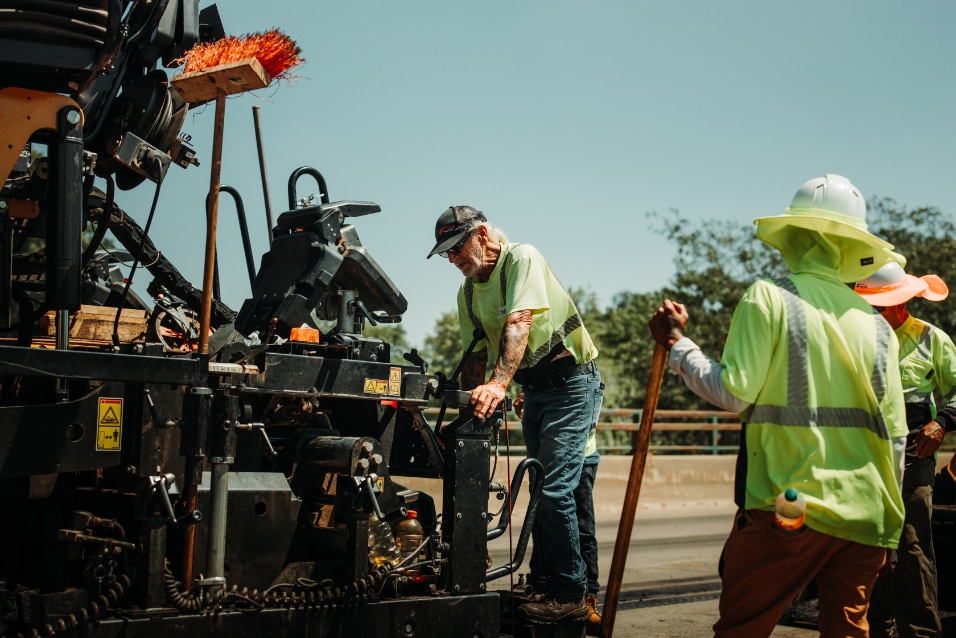
Given the difficulty of working PG70-34 mix by hand, Journey was sure to put a very experienced crew on the Cliff Avenue project. “Some of the guys on the back of the paver on this project have been paving for 30 years,” Latusek said. “They were on their A-game from the moment the mix hit the hopper.”
According to Schmidt, when the project was let to bid, the city allowed either PG58-34 or PG70-34. On the 41st Street overlay in 2019, the city opted for PG58-34 and fibers, to great success. “The street is showing some reflective cracks, but they’re tight and we think we’ll be able to get at least eight years out of the overlay,” Schmidt said.
Before letting the Cliff Avenue job, the city worked with Ken Swedeen of the Dakota Asphalt Pavement Association and Mark Blow at the Asphalt Institute about using a high-polymer AC on the job. “We picked their brains on our use of thin lift asphalt overlays and they turned us on to using 70-34 on this job,” Schmidt said. Ultimately, opting for PG70-34 cost $5 more per ton, for a total additional cost of $25,000 on the Cliff Avenue project. “It was a no-brainer,” Schmidt said; the city chose PG70-34—a South Dakota first.
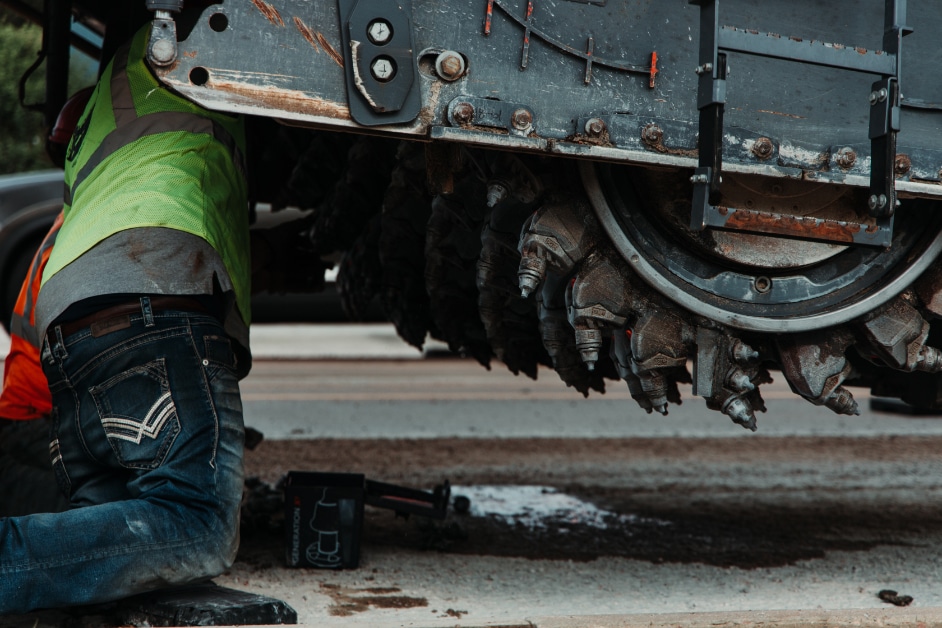
Milling in South Dakota can be quite challenging, due to the hard quartzite aggregate used in the state. “All the milling companies in the area know it’s going to take longer and they’re going to have to change more teeth,” Kerkvliet said.
Exciting as any statewide ‘first’ often is, the use of such a high-polymer AC challenged the intended project timeline. Journey Group consulted with its asphalt supplier and AC supplier, several states that had used PG70-34 in the past and the Colorado Asphalt Pavement Association, among others. “They all highly recommended paving in warmer temps in order to achieve compaction,” Kerkvliet said. “If this were a normal mix, we probably could have paved it in October. But since it was the first time 70-34 had been used in South Dakota, we wanted to make sure that it would be as successful as possible so the project would be a true test of its value.”
After discussing this with the city and consulting engineer on the project, everyone agreed it was in the project’s best interest to postpone paving until 2023.
Pick Up in the New Year
The first step of the process in 2023 was to edge mill the concrete—literally to the vertical face of the curb head. “Usually you only mill up to the curb pan, but we actually milled the 18-inch curb pan all the way to the curb and gutter head,” Kerkvliet said.
This would enable the city to maintain a 6-inch curb head on this project. “They’ve done previous projects with a 3-inch curb head reveal and prefer the 6-inch curb head,” Latusek said. So, on Cliff Avenue, the crew performed a 16-foot edge mill off the curb to salvage the existing curb height and maintain the 6-inch reveal. “Our milling subcontractor on the project said he had never seen milling through the curb pan before to maintain the existing curb head height.”
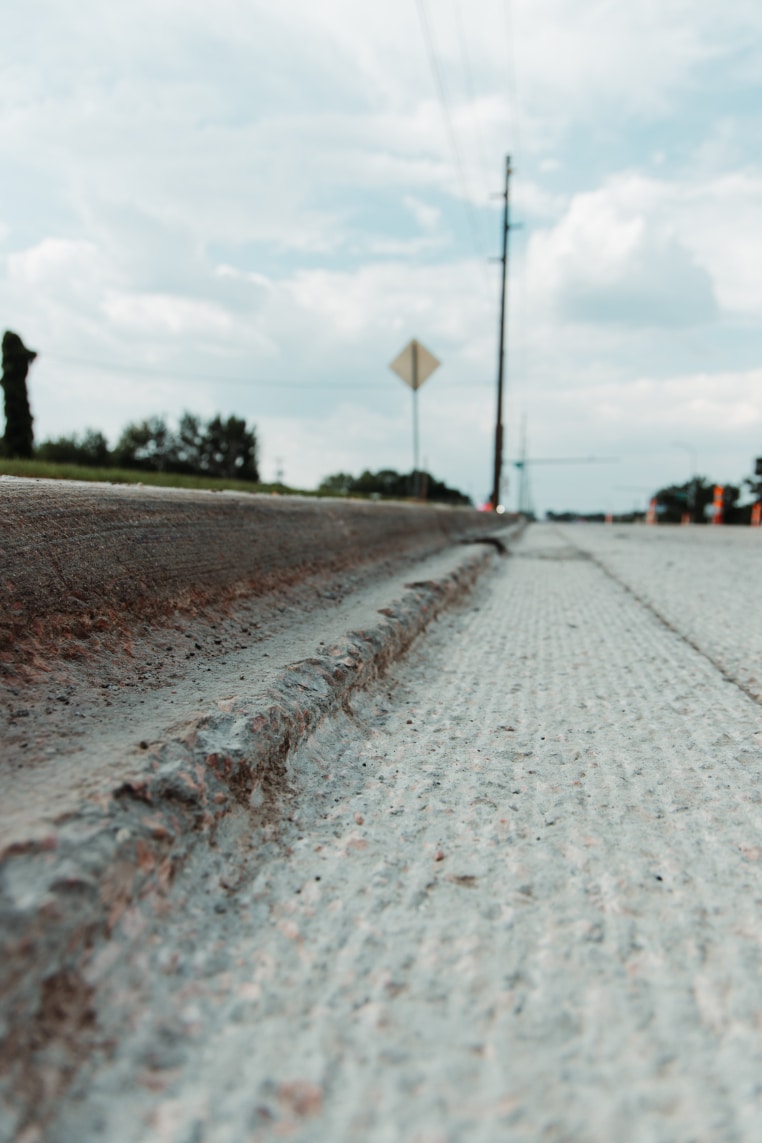
The first step of the process in 2023 was to edge mill the concrete—literally to the vertical face of the curb head. “Usually you only mill up to the curb pan, but we actually milled the 18-inch curb pan all the way to the curb and gutter head,” Kerkvliet said.
Even without that curveball, milling in South Dakota is enough of a challenge. “We have quartzite aggregate in our concrete and asphalt in the Sioux Falls area, which makes it extremely hard to mill,” Latusek said. In fact, some of Journey’s usual milling subs were hesitant to quote the Cliff Avenue project for this reason.
“All the milling companies in the area know it’s going to take longer and they’re going to have to change more teeth,” Kerkvliet said. “But the flip side of that is that it’s also a good, hard material for construction.”
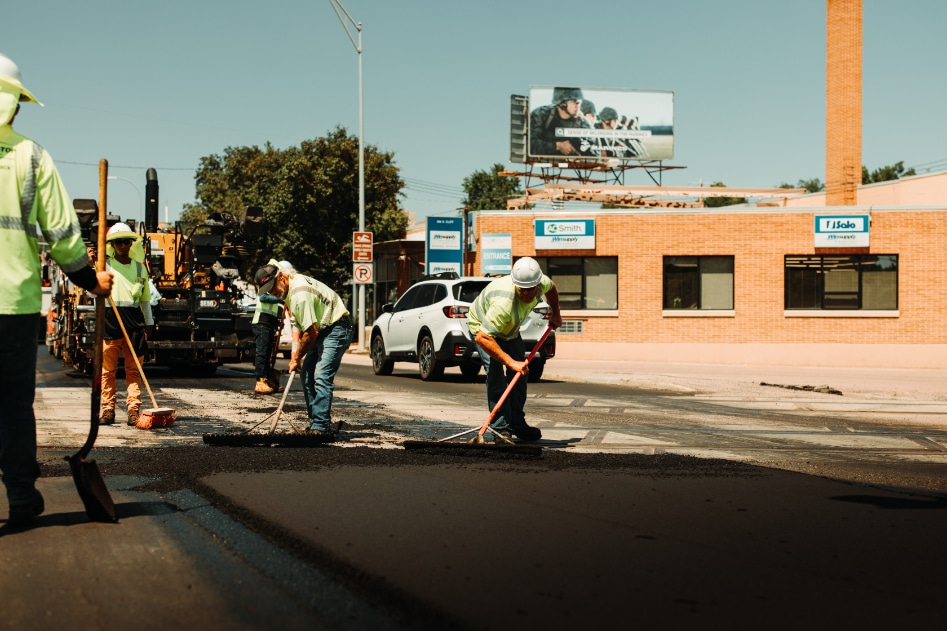
The rideability is a particular point of pride for Journey, given the large number of takeoffs on the job. Within the one-mile span of the job, there were three sets of railroad tracks and a bridge, for a total of 20 different takeoff locations across the project’s five lanes.
Given the material the crew would be milling up, Latusek was a bit nervous how long the milling portion of the Cliff Avenue job would take and the difficulties it might present, “but our sub, Industrial Builders out of North Dakota, rolled right through it,” he said. “It went smoothly for the milling contractor, took half of the time we allotted for it and turned out really nice.”
One week after milling began, Journey Group was ready to start paving the asphalt overlay. The first lift was a ¾-inch scratch course with PG58-34 to pre-fill any deviations from pre-filling the deteriorated concrete joints, followed by a 1 ¾-inch overlay with PG70-34.
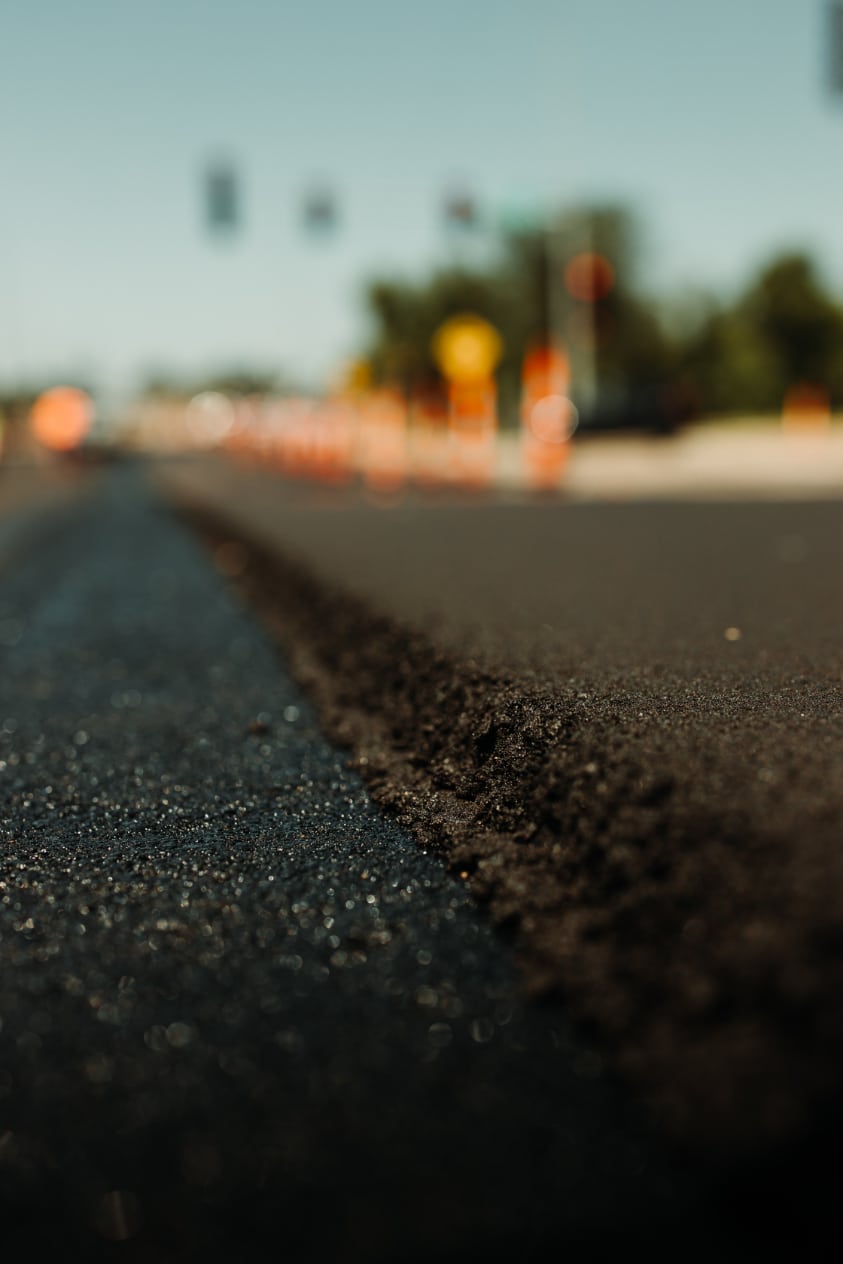
The city opted to use a PG70-34 polymer modified AC—a South Dakota first—on the Cliff Avenue project.
The mix—1,453 tons for the scratch course and 2,619 tons for the overlay—was supplied by Midwest Knife River. “We had one of their two plants here in Sioux Falls dedicated to our project because of this PG70-34,” Latusek said. “They had to reserve a tank just for that AC while also supplying mix to other contractors, so it definitely required some coordination to make sure they weren’t holding this AC for too long.”
Although it was the first time producing mix with PG70-34 at that particular plant, the supplier had previous experience with high-polymer mixes from its other locations. “They increased the temperature at the plant just a little bit to make sure we had time to place and compact the mix,” Kerkvliet said. “There’s less margin for error with this mix because you can’t easily work it by hand. We had to get it laid correctly and rolled as soon as possible—with no room for mistakes.”
Journey was sure to put a very experienced crew on the project. “Some of the guys on the back of the paver on this project have been paving for 30 years,” Latusek said. “They were on their A-game from the moment the mix hit the hopper.”
Latusek said he was pleasantly surprised by the high-polymer mix, compared to the 58-28 and 58-34 he typically sees. “I was expecting this PG70-34 to be more of a different animal than it was,” he added. Although it was less workable than other mixes, Latusek said the biggest difference was in achieving density. “We had to work significantly harder on that end of things.”
“We were pretty worried about the PG70-34, but it turned out well,” Kerkvliet said. “We’ve been getting compliments on the ride, even from some competitors.” The rideability is a particular point of pride for Journey, given the large number of takeoffs on the job.
Within the one-mile span of the job, there were three sets of railroad tracks and a bridge, for a total of 20 different takeoff locations across the project’s five lanes. “The rideability of that road is very impressive,” Latusek said. The city was similarly impressed.
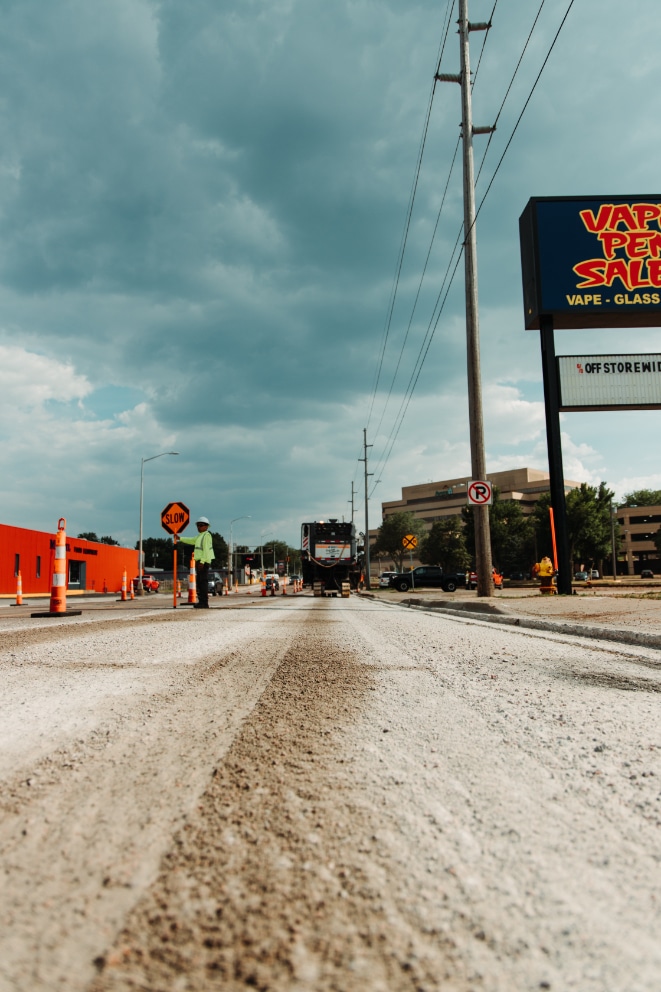
Given the difficulty of the milling on this project, some of Journey’s usual milling subs were hesitant to quote the Cliff Avenue project. However, Latusek said, the subcontractor, Industrial Builders out of North Dakota, did a great job.
“We’ve gotten a lot of positive feedback on the Cliff Avenue improvements,” Schmidt said. “Driving over all those joints used to feel like ‘thunk, thunk, thunk,’ but now it rides super smooth. People love it now.”
Milling began June 5, 2023, and Journey was paving by June 12. “We finished the project by June 29th, just ahead of the July 4th holiday,” Latusek said.
All Eyes on Cliff
Throughout the paving process, the project played host to a number of visitors from the South Dakota DOT, North Dakota DOT, the Dakota Asphalt Pavement Association, Asphalt Institute, a number of testing agencies, several cities, and South Dakota State University. “I think the students ended up taking 500 to 1000 pounds of samples to get a better gauge on this material,” Kerkvliet said.
“We had quite a few people come to observe,” Schmidt said, adding that he gave lots of tours of the project. “It was a pretty popular job.”
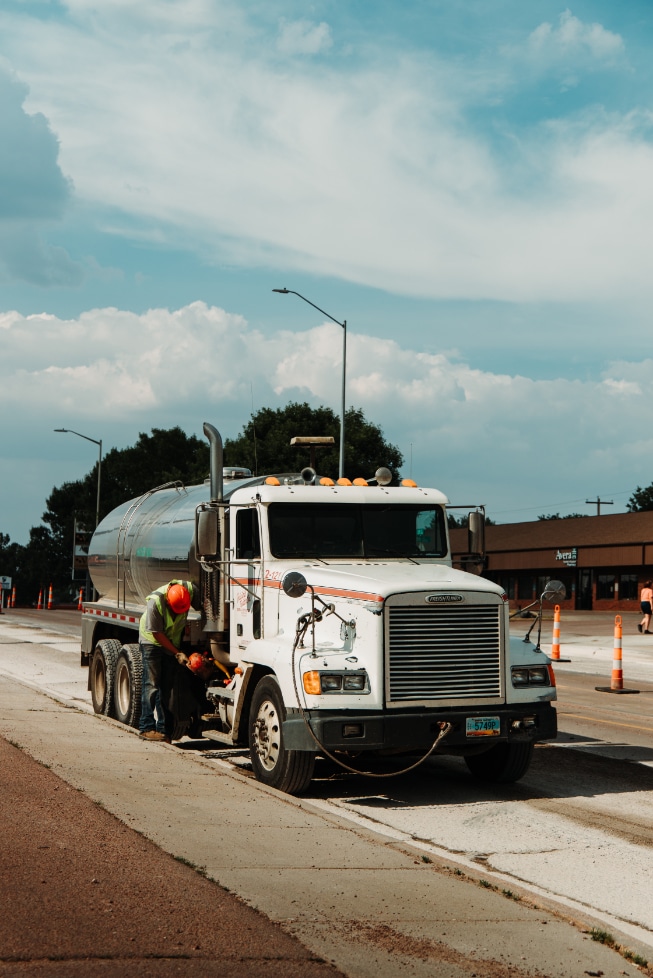
Although time will tell the true success of the project, the city has already moved forward with additional projects utilizing PG70-34. Journey paved 6th Street as a subcontractor and 26th Street as the prime contractor, both with PG70-34. “On 26th Street, we paved eastbound with 70-34 and the other with 58-34 to test how these two mixes perform against each other on the same street with the same conditions,” Schmidt said.
“If Cliff Avenue hadn’t gone as well as it did, the city probably would have gone back to the regular AC,” Kerkvliet said. “But knowing how well it went, they wanted to do a comparison of the two. Three or four years down the road, if there’s a big difference between the two, we’ll have our answer.”
Traffic Management
Traffic management was another challenge on the Cliff Avenue project. “There’s a major hospital right along the project, so there was a lot of coordination to make sure everyone knew how to get to the hospital and with emergency vehicles,” Kerkvliet said. Because the road had to remain open throughout the entirety of the project, Journey started on the inside lanes and then flipped traffic from the outside lanes to the completed inside lanes.
Furthermore, there were several major cross streets that could not be shut down. Instead, Journey had to compact and immediately open those intersections to traffic. “Our plan notes said that we had a four-hour closure, but the city was pretty clear that they didn’t want four hours if at all possible,” Latusek said. The busiest intersection was Cliff and 14th Street. “We got through that intersection in about an hour and a half then reopened it to perpendicular traffic.”
To view the original article, please click here.
